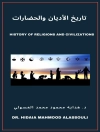With the continual appearance of evidence that the emerging generation (the i Gens) is not at all enamored of institutional churches, and is ignoring or forsaking them, it seemed a good time to take a step back, take a deep breath, and take a fresh look at what the church was intended to be and do in the New Testament document. The author spells out the landscape and reviews the profile of recent generations, and then sets about to set forth the church as the communal component of God’s new creation in Christ. He engages in some challenges to the traditional understanding of the church, but sets forth a lively proposal in which every participant becomes interactive with the others, hence small fellowships. The younger i Gens are into relationships, not institutions. This book portrays the church in relational terms, i.e., a church delivered from captivity to institutions and church professionals, hence a book that is controversial and perhaps a bit ‘cheeky’ . . . but constructively challenging. The title is somewhat highjacked from the phenomenon known as the homebrew computer club, which is made up of six early computer scientists from whose creativity and relationship emerged much of the present computer and internet age.
Despre autor
Robert Thornton (Bob) Henderson has had a long and colorful career as a pastor, mentor, Presbyterian denominational leader, ecumenical participant, author, encourager, and missiologist through some tumultuous cultural episodes. But it was South African missiologist David Bosch who said that missiologists are always gadflies in the church, always challenging its expressions and self-understanding. In that sense, Mr. Henderson is comfortable with his role as an ecclesiastical gadfly who has influenced many emerging collegians and young adults for over five decades.




